Listen to this URBAN REGENERATION MIX!
Edited on
03 March 2020Peter Wolkowinski, lead expert on URBAN REGENERATION MIX shines a light on Lodz in Poland. Its success story regenerating “The Priest's Mill" neighbourhood will serve as an example for an URBACT Transfer network consisting of Birmingham (UK), Baena (ES), Braga (PT), Bologna (IT), Zagreb (HR) and Toulouse (FR).
Synthesis of the URBACT Good Practice

Turning a largely abandoned industrial site, with over 300 families into a more than dynamic, social residential area of quality with diversified activities, is the resounding success achieved by Lodz (PL) in a small area called "The Priest's Mill" (Księży Młyn).
The social tissue of the inhabitants is maintained and the renewal of the buildings is made possible due to a very intricate policy of moving and temporary replacement accommodation. Intensive contacts and strongly developed relations accompany the inhabitants throughout the infrastructural changes, thanks to a process of skillful mediation and community leadership as well as by building up local partnerships with the creative sector and businesses.
The network
Birmingham (UK) and Baena (ES) joined Lodz (PL) in Phase 1 of this URBACT Transfer network. In Phase 2 the network includes Braga (PT), Bologna Metropolitan Area (IT), Zagreb (HR) and Toulouse Metropolitan Area (FR). These cities are searching for ways to deal with run down areas. Although they have been experimenting for years, these cities feel they have to develop their integrated competences in regeneration, by:
- cutting across silos which exist within the city administrations and with partners,
- achieving the appropriate social mix by preventing gentrification and bringing citizens into a co-construction mode.
Context of the Good Practice city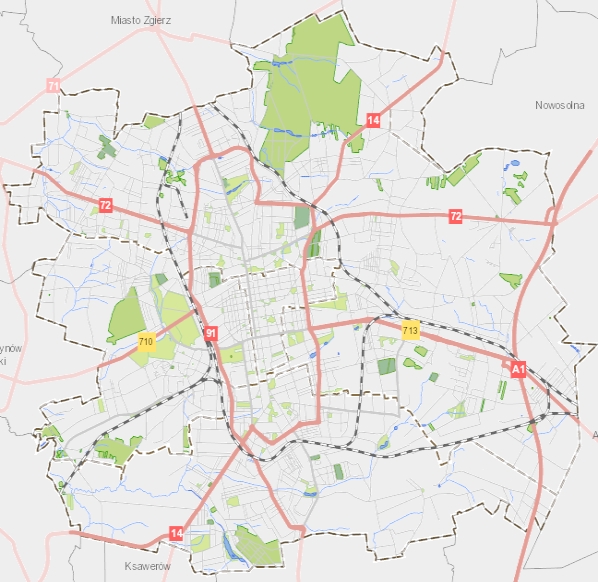
Lodz is a city in central Poland, about 120 km to the southwest of Warsaw. Known for its film industry and textile production, Lodz has gone through very serious crises in the 20th century: the city lost its more creative and entrepreneurial Jewish and German populations as a result of World War II.
The refugees from other parts of Poland, looking for somewhere to live, were mainly from the countryside. The lack of investment in buildings, the majority of which became public after the war during the 40 years of the communist regime, resulted in a very run down city. The textile industry disappeared to Asia in the 90’s.
However the potential of the city is enormous. It possesses several hundred classified buildings and palaces and a population of 700 000 people. It has the longest single shopping high street in Europe (4,2 km), which has been renewed and is in part pedestrian. Lodz maintains its strong leadership in the film industry and creative arts. Nearly all known Polish film producers and actors learnt their profession in Lodz (Wajda, Kieślowski, Zanussi…).
The city lies close to the capital with an efficient and rapid rail link and is at the crossroads of major motorways. It has shown a strong capacity to work together with private investors on the refurbishment of industrial buildings, creating jobs and keeping buildings in good condition (Monopolis, Manufaktura, lofts in Scheibler's factory etc).
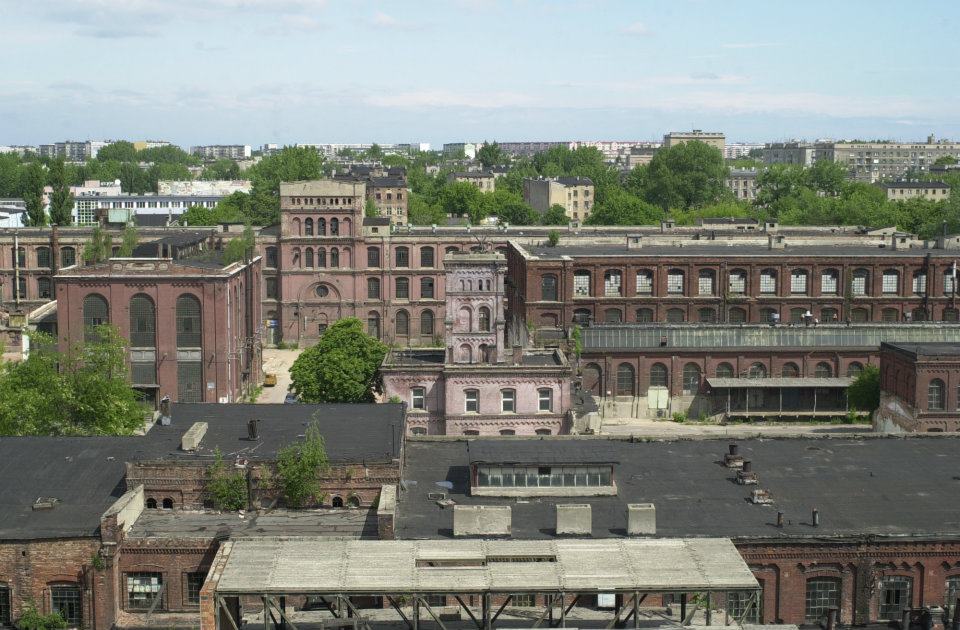

Taking the initiative
The city of Lodz possesses 45 000 apartments and buildings, almost twice as much as any other Polish city. Using its own financial resources, the city put into place a strong regeneration action to renew over 200 of the most important historic tenement houses. This immense adventure was widely recognised as very bold and showed the capacity of the city to fend for itself.
Lodz learnt from this experience: the flats in the buildings were often too large in relation to the capacity of the occupants to pay the rent and that building works have to be very thorough, as the infrastructure was generally in very bad condition. The city’s regeneration strategy became known as “Lodz Development Strategy 2020".
With the use of EU funding, the Polish government went even further and put into place a pilot project for Lodz and 2 other Polish cities: Walbrzych and Bytom. The Lodz strategy works towards improving the wellbeing of its inhabitants, decreasing the loss of citizens and improving infrastructure.
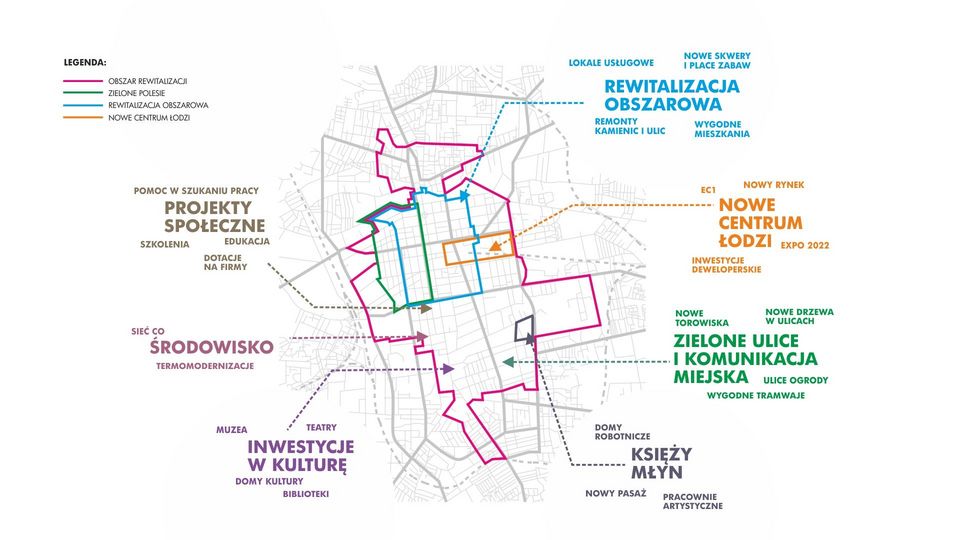
Lodz defined the degraded parts of the city to be regenerated: the area covers 4 405 acres, 21 000 buildings and concerns 20% of the city’s population. The old city centre is divided into 20 quarters of which 8 are at present being regenerated with a total budget of 250 million EURO.
An experimental pilot
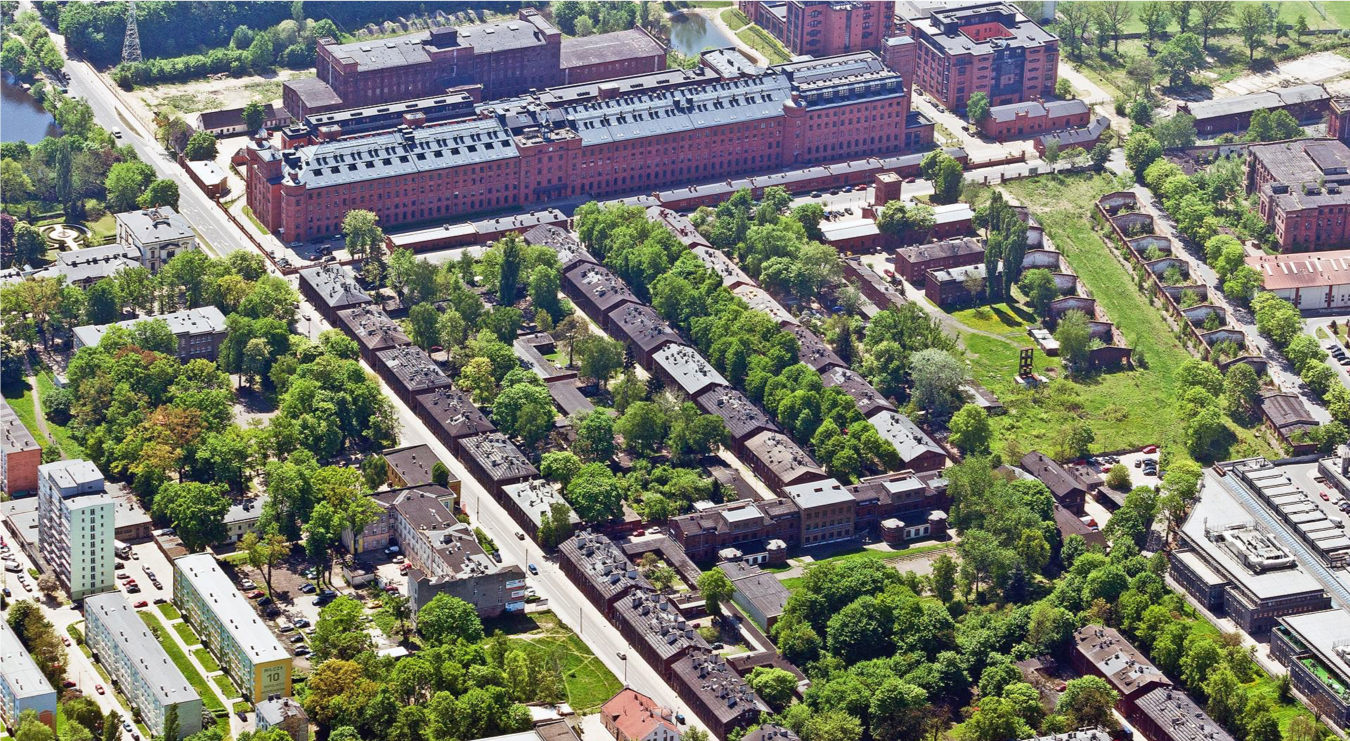 The buildings of the "The Priest's Mill" (Księży Młyn) became the centre of attention for the city and city activists around 2007. After some tense moments, the city decided to maintain the area as public property and prepared a strategy called: "On the textile architecture pathway: the regeneration of Priest's Mill".
The buildings of the "The Priest's Mill" (Księży Młyn) became the centre of attention for the city and city activists around 2007. After some tense moments, the city decided to maintain the area as public property and prepared a strategy called: "On the textile architecture pathway: the regeneration of Priest's Mill".
It focused on the following elements: maintaining a mixed tissue of inhabitants and new stakeholders, bringing in creative professionals, creation of a Design School, as part of the Lodz Arts Academy, developing cycling paths and insulating the buildings, whilst maintaining their historical features.
The coordinator brought in by the city approached these challenges by "doing and experimenting". The analysis of the underground system of water works and drainage, the need for renewal of the buildings, roofs and internal arrangements initiated the start of the building works. The reduction of polluting emissions was a condition imposed by the city. All the housing communities joined the project as partners in order to improve the quality of the air, joining the municipal heating system etc.
A lot of time was invested to get to know the inhabitants and observe their needs on an individual basis. During the building works some people were moved into temporary accommodation, which had been refurbished in the same area. At the same time the project manager encouraged a series of professionals (fashion designers, cafes, artists and printers) to install their workplaces in the neighbourhood, very successfully.
Today, the area is classified as a historical building and is open and often visited, it even has its own tourist office, becoming a well-known attraction. It is this process, which has become one of URBACT's choices for Good Practice: upkeep of social mix and participative processes.

Bringing the city to the inhabitants
The regeneration of the city centre of Lodz takes on a very different scale. A specific directorate for regeneration coordinates the infrastructural work and employs mediators of different sorts. As says Mr. Rosicki, Vice Mayor for regeneration: "This process is the main priority of the local government".
These mediators (20 people) try to make moving into a positive change in people’s lives, assisting them in learning how the city administration functions and helping to resolve their problems or support them in getting initial financing for community activities. For the next steps, they will become the city's representatives in repopulating the refurbished tenement houses.
The city has also developed actions such as: training of hundreds of civil servants and partner stakeholders in building new relations with citizens, interdisciplinary coordination, developing a repopulation strategy and guaranteeing a real social mix in the regenerated quarters.
Aspirations for transfer
 The network cities despite being completely different realities and sizes, share a number of experiences and have come to similar conclusions about their challenges. All local authorities want to improve ways of communicating with inhabitants. They want to promote inclusive growth, but are very concerned and, according to Lloyd Broad, Head of Employment and Skills and International Affairs in Birmingham, they all want to prioritise "moral purpose and compassionate integrity". Given the 50% cuts in central government financing of local authorities in the UK, for the elected members of Birmingham Council, the most important element in regeneration is financing, so that the competences of the communities become strong enough to be able to operate self-sustaining actions. They are also very concerned by the results and impact of the actions, wanting to know if the few financial resources left have a real effect on communities.
The network cities despite being completely different realities and sizes, share a number of experiences and have come to similar conclusions about their challenges. All local authorities want to improve ways of communicating with inhabitants. They want to promote inclusive growth, but are very concerned and, according to Lloyd Broad, Head of Employment and Skills and International Affairs in Birmingham, they all want to prioritise "moral purpose and compassionate integrity". Given the 50% cuts in central government financing of local authorities in the UK, for the elected members of Birmingham Council, the most important element in regeneration is financing, so that the competences of the communities become strong enough to be able to operate self-sustaining actions. They are also very concerned by the results and impact of the actions, wanting to know if the few financial resources left have a real effect on communities.
Jesus Rojano Aguilera, Mayor of Baena, is very concerned about the multiple sides of the integration question:
- how to improve the integrated management elements of his city
- how to integrate the old town into the new town
- how to integrate the San Pedro quarter into the old and new towns.
First step towards the transfer of URBAN REGENERATION MIX
The network will concentrate on producing lasting changes towards the wellbeing of citizens by initiating actions, which become sustainable and self-supporting and empowering persons and communities in their new roles on the basis of the “Priest's Mill” Good Practice.
This will be done with a zoom in on impact measurement and management as a continuous process.
Cities will also become aware of their brokerage role in their relations with inhabitants, becoming operational due to collective work on a set of competences for regeneration (city officials and other stakeholders), communication standards, analysis, model and usage of brokers/mediators, participation policies and instruments, ensuring social mix – responsibility, entrepreneurship and employment, multi-level and integrated forms of management and preparing public authorities in the best possible way to be able to fulfil their roles as brokers of co-constructed regeneration policies.
***
Visit the network's page: URBAN REGENERATION MIX
More on Culture and Heritage at URBACT: https://urbact.eu/culture-heritage
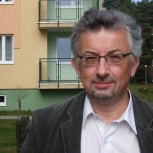 Submitted by Peter Wolkowinski on
Submitted by Peter Wolkowinski on




